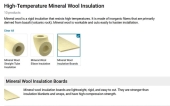yea it is a can of worms imo. people have different goals. I dont see how RMH could ever be insurable because RMH means 100's of different things depending on the design/materials/location etc. It would have to be standardized and severely limited, then tested by Gov, etc. at which point the usefulness in many peoples applications may no longer work or be within budget. The materials for these heaters is already approaching cost of traditional stoves. the beauty of rmh is its customization and diy aspects imo. I specifically built this for its unique applicaiton and use case and that is partly why its the way it is and has less than ideal burn temps. That was not even in the equation other than to get things close enough to correct, to insure proper draft and decently low temps so exhaust could go right out side wall with no treatments, and to that end, the build is exceeding expectations.
So rmh community members who are pursuing that ideal/goal of 'complete burn', have a interest in the top of tower burn temperature. Same with those who believe in the globe, or 'pollution' etc. Total can o worms there. Compare a day of US military weapons' affect on air water and soil just for one of thousands of pollution starting points, thenask ones'self, whether a rmh with only 80% efficiency vs a finely tuned 95% example is worth a seconds thought. ......And after building and learning a bit from this, I believe there are some downsides to too hot a burn, that are not mentioned for whatever reason. How they wear out the heater so quick, how it makes even high temp cements and other mortars very precarious to unusable. etc.....Everything is a tradeoff and calculus equation in this less than ideal world.
the other mentioned drawback of a less than ideal burn is creosote. I'll keep an eye on it, but it looks and smells clear to me. although i could because the exit exhaust is just above head height, I dont smell it enough to know. But times I have, depending on point in the burn and type of wood etc, it ranges from no smell, to hint of wood. Which compared to a metal wood stove, is far better, so this would equate to a much less likelihood of creosote buildup. will see. I think with dry wood I can get temps at the top tower inside to be 6-700F ?(although wont be able to confirm). But even if its currently 4-500, I dont have an issue with it. Part of the sales pitch for rmh is that you can burn found sticks and misc building materials etc, and while I dont plan to do a lot misc materials, I will be cleaning the property of fallen twigs/branches and putting them right in there. That is real world use case, and it does work fine for me so far, it seems.
Just for fun and personal edification, I'd like to know the difference of burning the twigs and wet wood VS, ideal dry wood though, in terms of top of tower burn temp...











